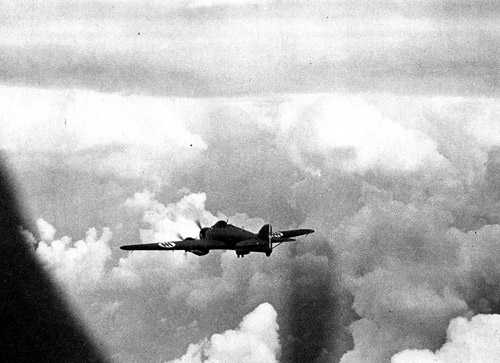In honour for the Italian crewmembers of the SM79:
Among the men who became famous through serving in the Regia Aeronautica, the Sparviero crews became even more renowned than fighter aces because of the initial records set, the successful raids in Spain, especially those made by the "Green Mice" (I sorci verdi), and the torpedo missions carried out during the war which became the subject of fascist propaganda. Among the men famous for serving in Sparvieri were:
Giulio Cesare Graziani (relative of Marshal Rodolfo Graziani), who before joining the 132th Torpedo Squadron, was badly wounded in an encounter with RAF Hurricanes and made a forced landing in the Ethiopian desert. Postwar, he later rose to the rank of Lieutenant General of the Air Force.
Carlo Faggioni, one of the more skilled pilots, who was shot down in 1944 during the Anzio landings. Only his hat was recovered from the sea.
Martino Aichner (nicknamed “Dolphin”), who made an inauspicious start to his career by hitting the sea during a low-level run in training that destroyed the propellers of both wing-mounted engines of his Sparviero, and running on only the power of the central engine, managed a sea landing. He was involved in the sinking of the already crippled destroyer HMS Bedouin on 15 June 1942, which was able to shoot down his bomber, forcing him to ditch in the sea, and in 1943 he was forced to make a third landing in the sea.
Emilio Pucci became a designer after the war.
Guido Cimicchi, Dequal, Robone and Faggioni, who were some of the early torpedo bomber pilots.
Carlo Emanuele Buscaglia, perhaps the most famous and highest scoring SM.79 pilot, who was involved in the torpedoing of the Kent and the Glasgow, and was shot down in December 1942. After the Italian Armistice Buscaglia joined the Italian Co-Belligerent Air Force; while flying a Martin Baltimore, he crashed during takeoff and died as a result of his injuries the day after.
Italo Balbo, notable Italian pilot, air marshal and military commander during World War II, who was shot down over Tobruk by friendly fire, an incident that Balbo’s closest friends and family strongly believed was an assassination ordered by Mussolini.
Greetz,brummbar

